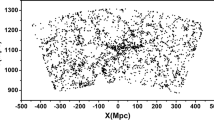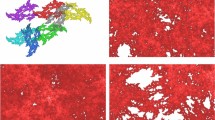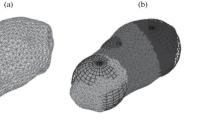Abstract
We used Wolfram Mathematica 11 to study the applicability of the pairwise separations method of estimating fractal dimensions in astronomy. Realistic, i.e. not too large and noisy datasets are used in the simulations. Results demonstrate that one has to be careful when using pairwise separations method, especially with small noisy 3D data.
Similar content being viewed by others
References
Saslaw, William C.: The Distribution of the Galaxies: Gravitational Clustering in Cosmology. Cambridge University Press, Cambridge (2008)
Raikov, A.A., Orlov, V.V., Beketov, O.B.: Inhomogeneities in the spatial distribution of gamma-ray bursts. Astrofysics 53(3), 396–408 (2010)
Gerasim, R.V., Orlov, V.V., Raikov, A.A.: Study of the large-scale distribution of gamma-ray burst sources by the method of pairwise distances. Astrofysics 58(2), 204–215 (2015)
Raikov, A.A., Orlov, V.V.: Method of pairwise separations and its astronomical applications. Mon. Not. R. Astron. Soc. 418, 2558–2564 (2011)
Peitgen, Heinz-Otto, Jürgens, Hartmut, Saupe, Dietmar: Chaos and Fractals: New Frontiers of Science. Springer, Berlin (2004)
Author information
Authors and Affiliations
Corresponding author
Rights and permissions
About this article
Cite this article
Benjamin, J., Walker, D., Mylläri, A. et al. On the Applicability of Pairwise Separations Method in Astronomy: Influence of the Noise in Data. Math.Comput.Sci. 13, 5–10 (2019). https://doi.org/10.1007/s11786-018-0373-1
Received:
Revised:
Accepted:
Published:
Issue Date:
DOI: https://doi.org/10.1007/s11786-018-0373-1




